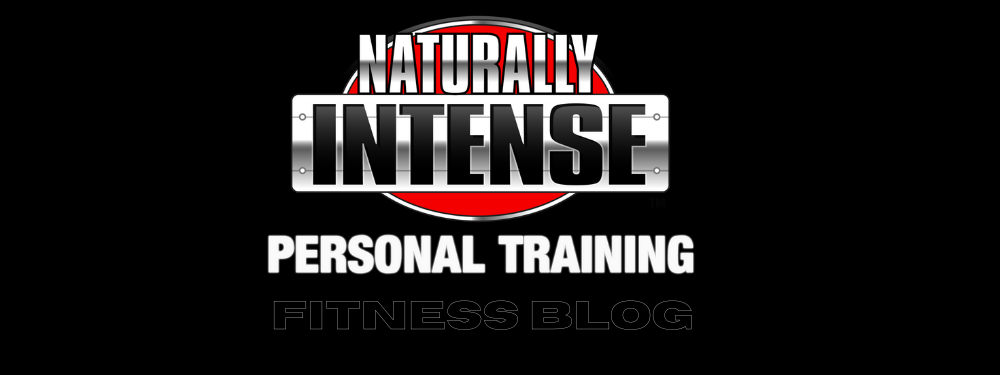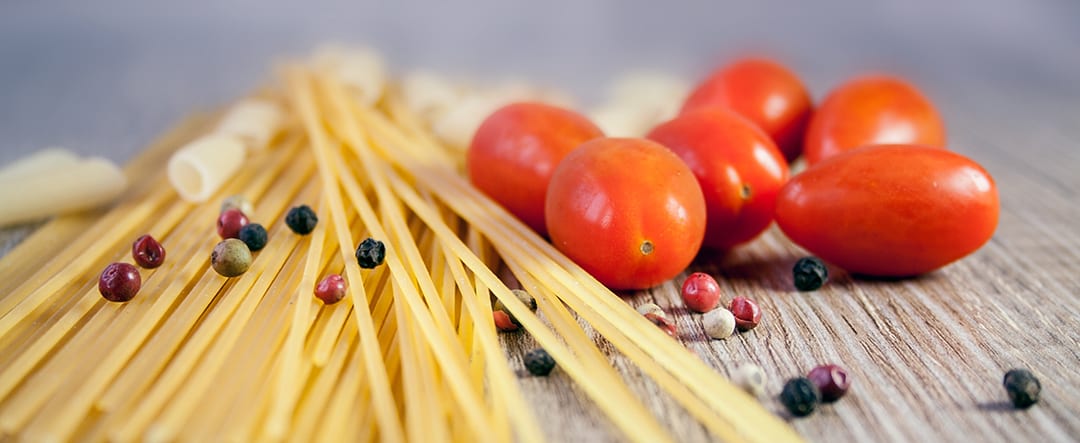Glycemic Index and Glycemic Load- Understanding The Limitations For Weight Loss
First introduced to the world at large back in the early 1980’s, the glycemic index was initially developed as a tool to help diabetics make better food choices by creating a numerical system to measure the impact of foods on blood sugar levels. Since then, the glycemic index and later, glycemic load became a standard for many as a way of determining how healthy a particular food may or may not be. Numerous popular books on the market and dietary guidelines recommend using glycemic index and glycemic load as simple way to lose weight and stay healthy as well as a preventive measure against cancer, obesity and the slew of metabolic diseases that accompany it.[4] In a way, the glycemic index became a simple solution to the modern problem of maintaining a healthy body weight and figuring out what we should and should not eat. However as enticing as such a solution might sound, the science behind it is far more complex and many authorities in the field of nutrition question its usefulness outright.[3,5,6,7] One of the recurrent problems facing most people seeking to lose weight and eat healthier in our society is that of oversimplification. Namely, the tendency of many ‘nutritional solutions’ to be whittled down into easy to digest news bytes that are also easy to sell. It’s an approach that works wonders for marketing purposes but has little or no real educational value to the general public as you don’t sell an idea by delving into its inherent limitations. The glycemic index is a case in point. While it can be instructional to some degree, the assignment of a low glycemic index value to a food is by no means an iron-clad indication of whether it’s good for you or not. The innumerable combinations of different foods in our meals, individual variations in food absorption rates and discrepancies in the measurements of foods grown in different soils all make it questionable as a simple one stop solution. More importantly, processed foods high in sugar and fat may have a low glycemic index value but it would be absurd to consider them healthy choices by any stretch of the imagination due to their high calorie value and low nutritional yields.[1,3] In this article we will take a hard look at the glycemic index and show what it can and cannot tell us about foods.
Glycemic Index and Glycemic Load- Understanding The Role Of Carbohydrates
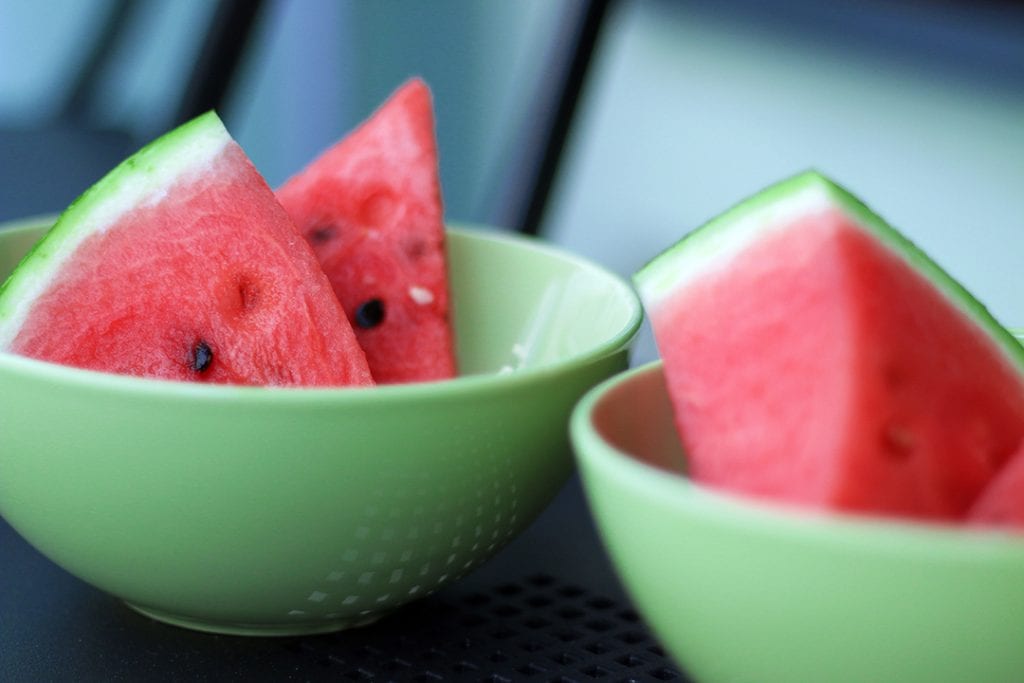
In order to understand the limitations of glycemic index values we must first understand the nature of carbohydrates and what happens in our bodies when we eat them. There are two forms of carbohydrates as defined by their biochemical structure- simple carbohydrates and complex carbohydrates. Simple carbohydrates are sugars that can be further subdivided into single sugars (monosaccharides) and compound sugars (disaccharides)- which are combinations of two single sugars. Examples of single sugars are glucose- which is the primary fuel for our brain and muscles, fructose, the naturally occurring and extremely sweet sugar in fruit and vegetables and galactose. Examples of compound sugars are sucrose or table sugar- which is a combination of a glucose molecule and a fructose molecule, lactose or milk sugar- which is a combination of a glucose molecule and a galactose molecule and maltose (malt sugar) which is a combination of two glucose molecules. On the other side of the spectrum are complex carbohydrates (polysaccharides) which can be thought of as large chains of glucose molecules strung together and are thus much more complex in structure than simple sugars. Some common examples of complex carbohydrates are grains, beans, oats, rice and potatoes and bread.
Now our digestive system can’t absorb anything larger than a single units of glucose, so when you eat carbohydrates of any kind, the enzymes in your small intestine break them down into smaller and more manageable chains. Only when they have been broken down into single molecules of glucose can they then be absorbed by the intestinal walls and enter your bloodstream. Once blood glucose levels begin to increase, your pancreas begins secreting the powerful hormone, insulin. Insulin works to transport sugar out of your bloodstream and into the cells of your muscles and liver where it’s needed as a fuel source to keep your brain working and your muscles moving. Some of that glucose is also sent to your fat tissues and any excess that isn’t immediately needed is stored in a form called glycogen. Compared to fat, our other and much more abundant energy system, our body cannot store that much glycogen in our bodies and thus can be easily overwhelmed. If you eat too much carbohydrate foods that are quickly absorbed into the bloodstream, like refined carbohydrates, your pancreas will try to compensate by secreting a large amount of insulin. That insulin spike causes two major problems. The first is that as blood sugar levels drop rapidly in response to the high insulin levels, you will feel your energy levels plummet which will make you feel extremely hungry and make you more likely to eat the wrong foods and overeat. The second problem is that since our muscle and liver cells have a limited amount of storage space for glycogen, any excess glucose is converted into fat and stored as such. Both factors over time increase the likelihood of weight gain risk of metabolic related diseases such as type 2 diabetes and cardiovascular disease, thus it makes sense to create a system that gives us a heads up on how our blood sugar is affected by the foods we eat.
Glycemic Index – A Definition
In response to this problem, Dr. Jenkins and his colleagues devised the glycemic index- which is a numerical ranking system based on how fast our body absorbs glucose. Formally speaking, the glycemic index is a measure of blood glucose response to food consumed relative to the consumption of 50 grams of pure glucose. Testing is done under standardized conditions and is ranked on a scale of 1 to 100 with glucose at the top of the scale with a glycemic index of 100.[2] The glycemic index classification system categorizes foods with a glycemic index value of 70 or more as having a high glycemic index value, 55-69 as being medium, and any score under 55 as being low.[2] That being said, carbohydrates that are high in fiber slow down the rate of absorption of glucose in the small intestine, and tend to have lower glycemic values. Fruits, vegetables and grains in their whole forms are good examples of carbohydrates that are high in fiber and whose impact on our blood sugar make them excellent food choices when consumed in moderation. Such foods are either unprocessed or minimally processed as one of the side effects of food refinement is a significant removal of naturally occurring fiber. Thus processed carbohydrates tend to have higher glycemic index values than their naturally occurring counterparts and if you eat a large amount of processed carbs you risk a severe insulin spike that can lead to weight gain and increased risk of health problems over time.
Glycemic Index And Glycemic Load
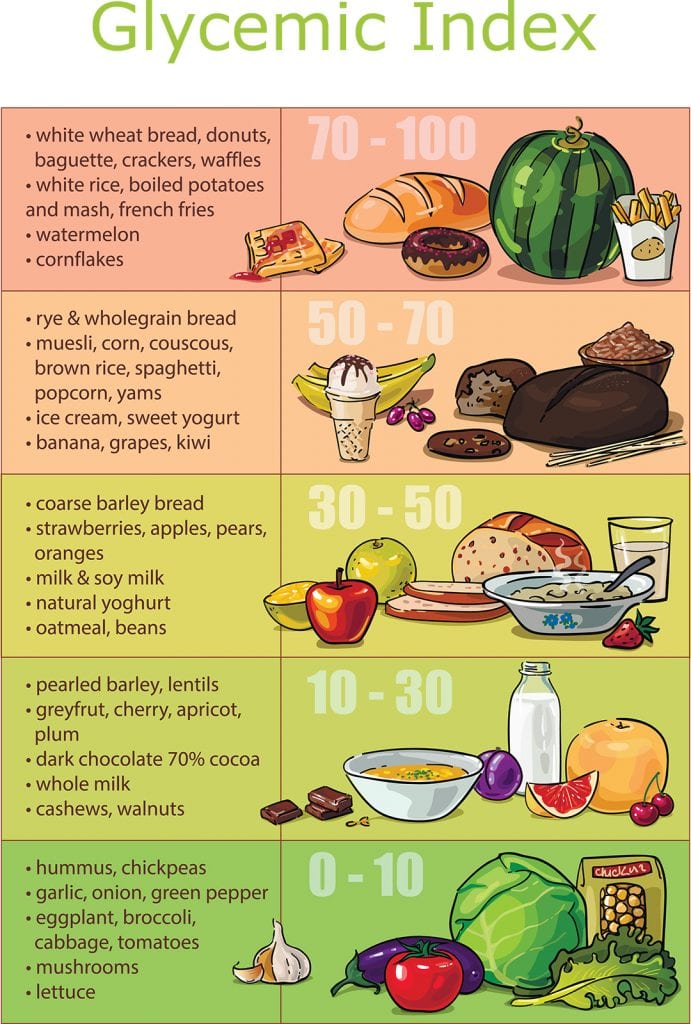
As we mentioned before refined carbohydrate foods tend to have a higher glycemic index value than naturally occurring foods, but it isn’t always that straightforward since the glycemic index does not take into consideration the amount of carbohydrate consumed.[8] Watermelon, for example, has a glycemic index rating of 72- which is high due to the glucose and fructose it contains, yet it is still a healthy and recommended low calorie carbohydrate food since it only contains 5 grams of carbohydrate per 100 grams. The fact that watermelon by weight is only 6% carbohydrate and 92% water means that you would have to eat a ridiculously large amount of it for it to significantly elevate your blood sugar levels[3] and a similar problem pops up for other naturally sweet fruits and vegetables. Carrots also have a high glycemic index value but like watermelon would not significantly affect blood sugar levels unless you ate 10 of them or more at one time. Which is why the practice of juicing often creates more problems than it solves by concentrating perfectly healthy fruits and vegetables in quantities that the human body would not encounter under natural circumstances and thus drinking juices initiate the same unhealthy increases in blood sugar that you would get from drinking a soda or some other sugary drink. To show that quantity of carbohydrate consumed is also a determining factor in blood sugar levels the glycemic load was developed. Glycemic load takes into account how much carbohydrates a serving of food contains by multiplying the glycemic index by the amount of available carbohydrate. Because it includes serving relevant information, in some ways it is a more accurate measure, but has it’s limitations nonetheless.
Problems With Using Glycemic Index & Glycemic Load For Weight Loss
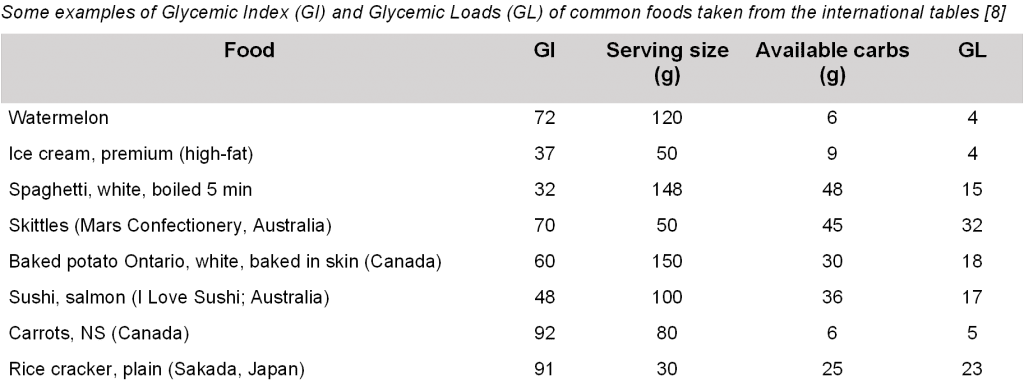
Unfortunately, human nutrition is an incredibly complex subject, a complexity that rears its head often when it comes to the accuracy of glycemic index and load values under real world circumstances. There are six major factors that change glycemic values that must be taken into consideration before using it as a measure of how healthy a food is for you or as a weight loss tool. Those factors are food fat content, changes in glycemic values due to mixing of foods in meals, individual differences in glycemic response to the same foods, food state and temperature, complications with glycemic index values themselves and the fact that blood sugar response does not have any relationship to food satiety.
Limitation 1. Fat Content Affects Glycemic Index Values
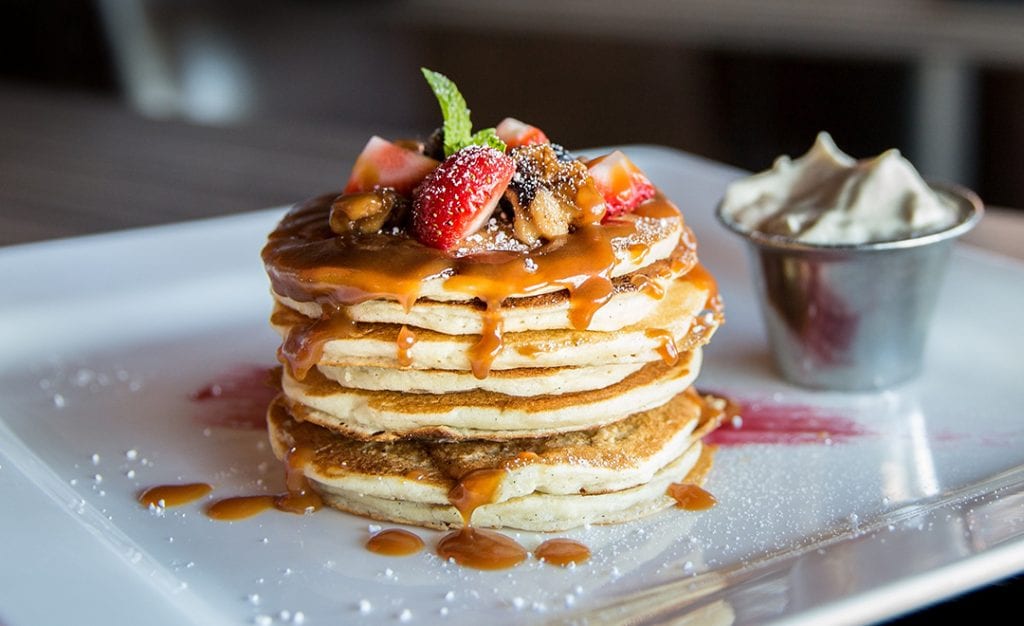
We have established that fiber plays a role in slowing down glucose absorption into the bloodstream and give a food a lower glycemic values but dietary fats can also have a similar effect. Fatty acids significantly depress glycemic responses which can result in a low glycemic index value for foods that are not simply not good for you on the whole.[3] High fat ice cream for example, which is both high in sugar and calories, can hardly be categorized as healthy yet its fat content gives it an index value of only 37. [8] A number that places it lower than or equal to most healthy fruits and vegetables including apples, bananas and pumpkins. Even when taking serving size into consideration, the glycemic load of a bowl of ice cream is still lower than that of a serving of oatmeal or oat bran cereal which right there is cause for alarm if you are using these indices as an exclusive measure of what you should and should not eat.
Limitation 2. Combining Different Foods Affects Glycemic Index Values
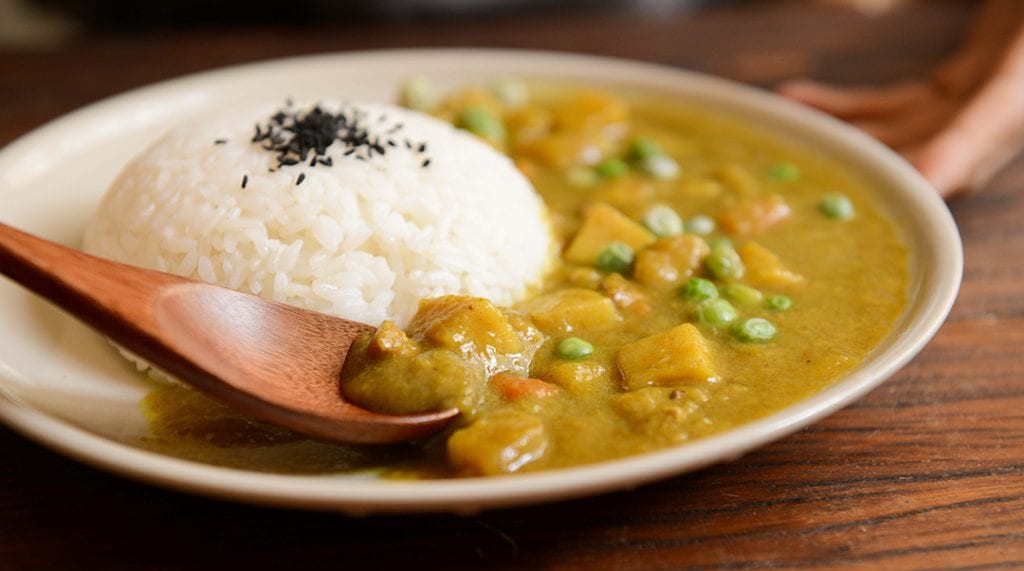
Further complicating matters is the fact that combining foods- as is most often the case in the world outside of the laboratories, can also wreak havoc on glycemic index value predictions. Studies found that drinking milk with rice, for example, results in a significantly lower glycemic index value than when rice is eaten alone- which is significant because few people in the developed world ever eat carbohydrate foods like rice or potatoes alone.[19] Eating chicken or fish with rice or also lowers the value to a degree that cannot be predicted by simply taking the average of the different foods consumed as the presence of protein also slows glucose absorption in the small intestine.[9] Given that accurate predictions for different combinations of foods is impossible- it brings into question glycemic index and load values as most people eat carbohydrates along with foods that are high in protein and or fats.
3. Individual Glycemic Responses To Foods Are Different
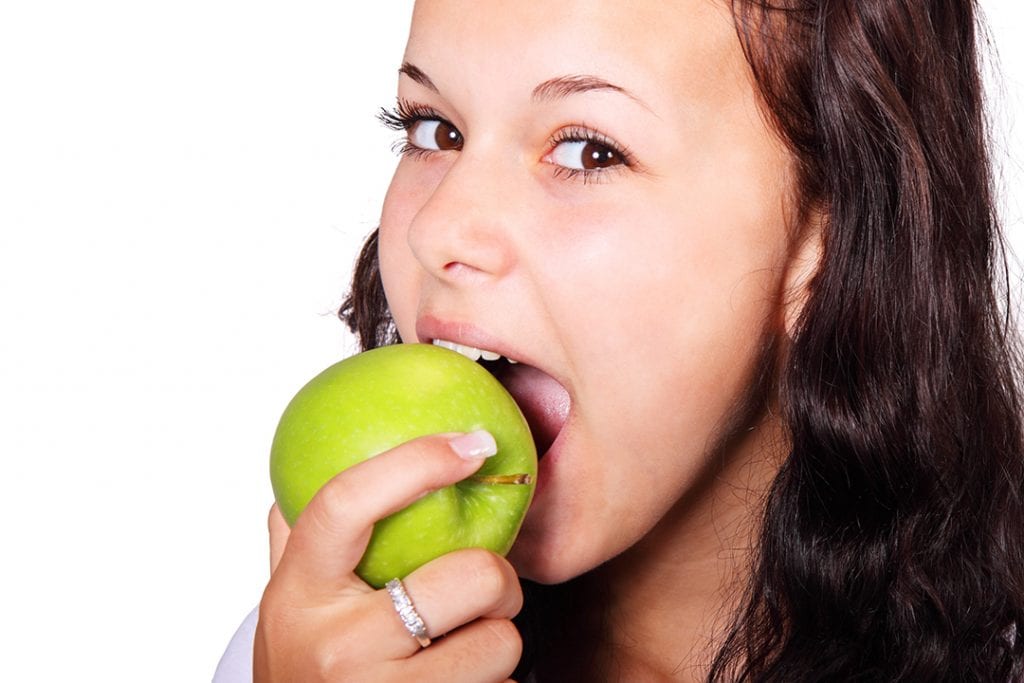
Making matters even more complex is the fact that different people can eat the same carbohydrate in the same amounts and have significantly different blood glucose responses. One study found that even the training state of an athlete changed the glycemic index response to the same food. [7] Other idiosyncrasies such as how long a food is chewed before swallowing as well as individual variations in digestion and absorption rates also affect glycemic values. [10,11] Further discrediting the validity of published glycemic index values is the fact that only six to ten subjects are used during testing. A number that any statistician would recognize as being too small a sample size given individual variations to represent the average blood sugar responses of everyone on the planet to a given food.[3]
4. Glycemic Index Values Are Affected By External Factors
You might think that the glycemic value of a single food would be constant, but it isn’t. Cooking and increased temperatures change the rate of blood sugar response of any given carbohydrate, as does lowering of temperature and moisture levels.[12] Raw carrots for example have a low glycemic index value of 16 but can jump as high as 49 or 92 when boiled- which under no circumstances disqualifies them as healthy food choices.
5. Glycemic Index Values For The Same Food Can Vary Widely
Staying with carrots as an example, international tables list boiled carrots as having a mean glycemic index of 92, 49 and 32 [8] which is confusing to say the least as the values range from within recommended levels to extremely high. Which brings into question again the reliability of glycemic index as an exclusive dietary tool since boiled carrots are indeed perfectly healthy choices. Multiple values are unavoidable something as seemingly trivial as where a food was grown and differences in ingredient concentrations can make for significant differences in blood sugar responses.
6. Glycemic Index Has No Correlation With Food Satiety Or Weight Loss
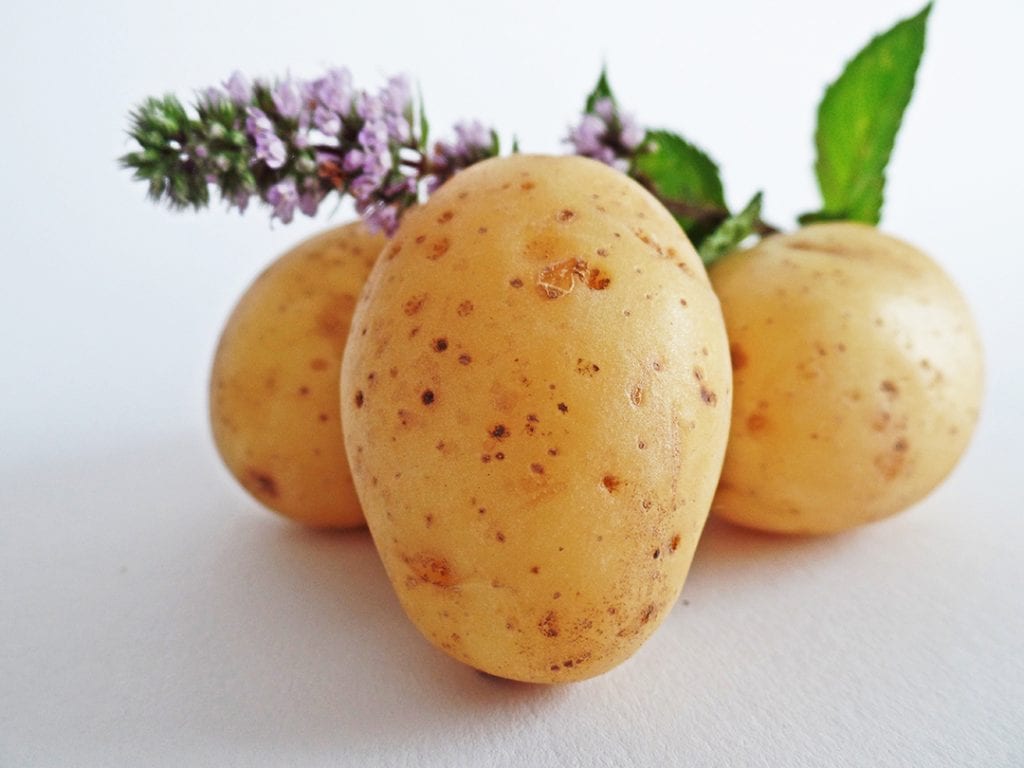
One of the most popular health claims for the use of glycemic index values is as a weight loss tool. The theory is that low glycemic index foods promote higher degrees of food satiety which reduces the likelihood of overeating and continued compliance with an energy restricted diet.[13] A interesting theory but one that fails to hold water when tested with the variety of foods on the market today. A comprehensive study that tested the satiety and insulin response of several foods found no relationship whatsoever between glycemic index values and perceptions of food satiety when comparing food portions of equal caloric value. The results were quite contradictory in fact as boiled potatoes were found to have the highest satiety rating, but also a very high glycemic index value. On the other hand porridge and natural muesli, which both have similarly low glycemic index values had marked differences in their satiety scores. The bottom line was that blood sugar response isn’t always directly related to satiety. Other studies failed to find differences in body mass index (BMI) among those using lower glycemic index foods as a means of weight maintenance.[14,15,16] Perhaps because glycemic index is not related to the energy density of foods which is a major factor in weight loss and weight gain.[3] For example, baked goods such as cookies and cakes have glycemic index values that are close to that of fresh oranges but have ten times more calories- a factor that also discredits the use of glycemic index values as a weight loss tool.[3] While some studies have found positive reductions in body weight among those consuming low glycemic index foods- all of those studies incorporated high fiber and naturally occurring or minimally processed foods as staples such as fruit, vegetables and whole grains. Substituting processed low glycemic index foods for more natural ones would not have the same result as a diet where the staples were high fat ice creams, cakes and pastries would not at all be one conducive to weight loss. In those studies where weight loss was achieved, low glycemic index values were more of a correlative factor than a causative one, further bringing its usefulness into question.
Recommendations For Selecting Carbohydrates
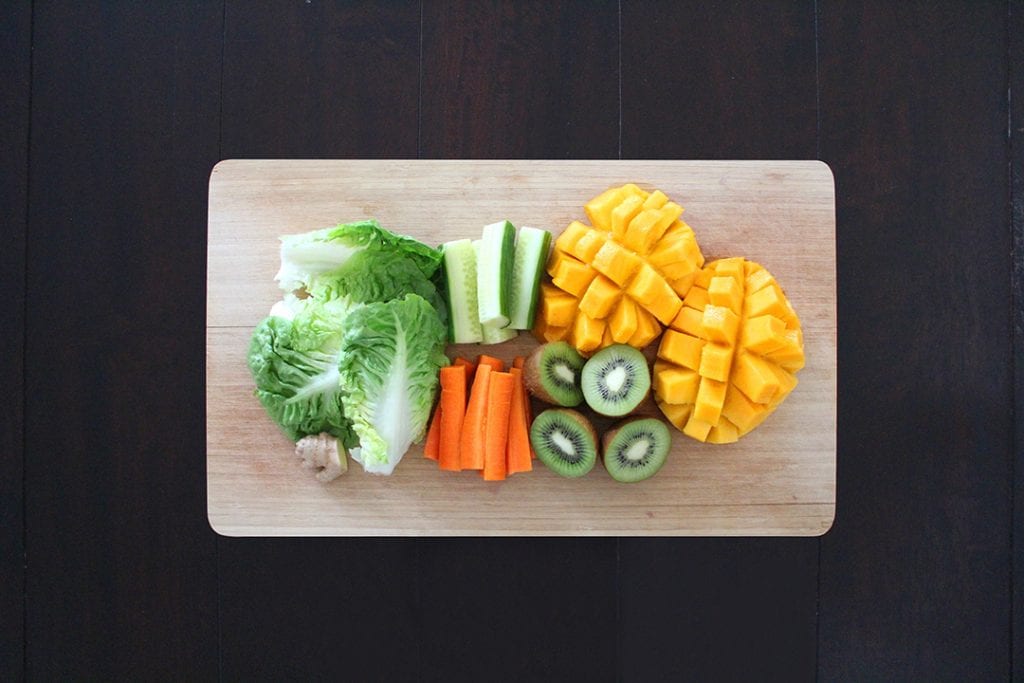
At the end of the day the limitations of glycemic index and load values as a viable tool for health and weight management are numerous and under no circumstances can it be used excursively as a one stop solution. While it does provide some insight into the fact that highly processed foods like candy and sweets are not as good a choice as fruit and vegetables, one could easily argue that such a finding could be discerned without any knowledge of glycemic values. Studies show modest improvements in blood sugar among diabetics who adhere to the practice of choosing low glycemic value foods.[17,18] However those studies also involved low calorie and high fiber foods, and as such those findings may not apply to the slew of highly processed low glycemic index foods on the market that are relatively high in sugars and calorically dense.[3] There is also no straightforward relationship between glycemic load and glycemic index as a food with an unacceptably high glycemic index would have a low glycemic load if eaten in small enough quantities. Which gives a green light to continue eating foods that may be harmful even in small amounts. On the other hand, a low glycemic index food that is considered a healthy choice can have a high glycemic response depending on how much of it you eat. All told weight loss and a healthy diet cannot be attained by blindly using glycemic values as it may in some cases cause more problems than it solves due to the somewhat complex and confusing nature of its nutritional shortcomings. That being said it can be of some use when used in conjunction with other important nutritional indicators such as caloric content, portion size and ingredient listings. As far as carbohydrates are concerned, though, you are always better served by eating high fiber and low calorie naturally occurring or minimally processed carbohydrate foods in moderate amounts, regardless of what the glycemic values might be.
High Intensity Bodyweight Training: Ballistic Pushups & Dips!
This was a tough one!
Starts out with ballistic push ups (like clap pushups but without the clap as my wrist is still not 100%) nonstop for 20 reps, then all out on dips for 10 reps.
To say it was painful would be an understatement, but you just have to push through and keep on going.
Still training, hope you are too and as always, Excelsior!!! #naturallyintense
#hometraining #homeworkout #homeworkout #highintensitytraining #naturalbodybuilder #naturalbodybuilding #fitover40 #naturalbodybuildingvideos #chestday #chesttraining #naturalbodybuildingtips #pushups #dips #bodyweighttraining #highintensitytrainingtips #drugfreebodybuilding #calesthenics
Kevin's Unconventional Biceps Training- 3-6 Minutes a Week!
In this video I go over my biceps training using the Naturally Intense High Intensity Training protocols that helped me go from having arms measuring 11.5 to 12 inches to 18 inches drug free!
It's an unconventional approach for certain, but it's one that's helped my arms grow and the hundreds of men and women I have trained over the past 30 plus years.
Now, my success isn't due to being genetically gifted, as it took me the better part of 11 years to get my arms up to those measurements.
Which is significant as it works and been been proven time and time again to work for the average man or woman trying to grow their arms without drugs.
It's my hope that these high intensity training protocols can help you as much as they helped me!
Click on my bio link to see the full video on my YouTube channel and thanks as always for taking the time to look at my work!!! Excelsior!!! #naturallyintense
#highintensitytraining #naturalbodybuilder #naturalbodybuilding #fitover40 #naturalbodybuildingvideos #armworkout #bicepsworkout #naturalbodybuildingtips #biceps #armtraining #highintensitytrainingtips #drugfreebodybuilding #barbellcurls
At the Lancaster Classic Day 2 Elimination Rounds Against European Champion, and World Record Holder Leo Pettersen @leo_barebow_archer
I don't talk much about it but I'm also a competitive barebow archer (surprise!) and last Saturday I had the honor of making it to Day 2 at the Lancaster Archery Classic in the Barebow Division, as I made the top 64 out of 267 competitors and had a chance to shoot with some of the greatest barebow shooters on the planet!
I didn't make it past Leo, but it was a real rush to be there and a huge thanks to my coach, Joe MyGlyn @prolinearchery for helping me get there.
Thanks as well to my good friend @sean_chan33 for all of his help from the very start, to my line buddy Aaron Shea for taking the shot and showing up to support!
My thanks as well to rob_kaufhold for putting on and promoting one of the best archery tournaments on earth!
Thanks also to to everyone who took the time to send a supporting word and I am looking forward to next year!!! #naturallyintense #barebow
#lancasterclassic #lancasterarcheryclassic2024 #lancasterarchery #archery #fitover40 #barebowrecurve #targetarchery
Dumbo, Brooklyn circa 2004
This shot was taken as part of the promotion for my Naturally Intense DVD and was about a year after my last bodybuilding competition.
It was a grueling photoshoot.
We started at about 10 am and finished around 4pm and I was completely spent, but the more we shot the sharper I looked, so we kept on going.
It's nice to look back from time to time and as tired as I was, we all had a blast!
My thanks to @stephanie_corne_artwork, @https://pulse.ly/itgnag2dec and @ftaz1 for taking the shots!!!
Thanks for watching and as always, Excelsior!!! #naturallyintense
#naturalbodybuilder #naturalbodybuilding #throwback #fifthavenuegym #5thavenuegym #drugfreebodybuilding #naturalbodybuildinglifestyle #gymlife #gymmotivation #naturalbodybuildingmotivation #bodybuilding #blackandwhite #instablackandwhite #bnw
Can You Build An Impressive Physique Training Only At Home?
Absolutely!
I stopped training in commercial gyms as of March 2020 and have been training at home ever since.
Initially I was admittedly worried that I might lose some of my gains or not make as much progress, but that certainly wasn't the case.
I've consistently continued to improve with my high intensity workouts and muscles have no idea where they are training.
As long as the criteria of adequate intensity and overload are met, there will be an adaptive response and your muscles will get bigger and stronger.
So don't worry at all about where you train, focus instead of what will be the best way for you to always be training!
Thanks for watching and as always, Excelsior!!! #naturallyintense
Kevin's Three Day Training Spilt!
For the past 33 years I have trained three times a week with Naturally Intense High Intensity Training workouts lasting 10, 15 to 20 minutes max.
It's a training split tried and testes not only in it's helping me realize my goal of becoming a successful natural bodybuilder, but it's also helped hundreds of men and women over the past three decades.
I have tested just about every possible training split imaginable and for this particular style of high intensity training, this particular grouping consistently yields fantastic results.
I hope it helps you as much as it's helped me over the years and thanks so much for taking the time to look at my work.
Keep training hard and Excelsior!!! #naturallyintense
Excelsior!!! #naturallyintense
#trainingsplit #3daytrainingsplit #threedaytrainingsplit #naturalbodybuilding #naturalbodybuilder #naturalbodybuildingvideo #naturalbodybuildingmotivation #naturalbodybuildingtips #drugfreebodybuilding #bodybuilding #highintensitytraining #highintensitytrainingtips
405 Stiff Leg Deadlift for 7 Reps! High Intensity Training.
First leg workout of the year and already pushing it!
I haven't done a stiff leg deadlift over 315lbs for about 3 years at this point, and I did my last set with 315lbs and comfortably got to 10 reps and decided I had far too much gas left in the tank and that I should go up in weight.
So I did.
I figured I might get a solid 6 reps in, but I made it to 7 and I think I could have gone on to get a full 10 reps BUT that's when good judgement prevailed.
As a bodybuilder having not trained this heavy for so many years, the shock of this much weight would be more than enough to stimulate muscle growth, and doing more reps wouldn't yield any greater returns, only increase the likelihood of injury.
It's not about the numbers, it's about training to a point where you achieve your goal, and it's important to have a goal in mind as a bodybuilder based on increasing muscle mass rather than hitting a particular number.
Besides, if in my 20's I never did more than 405lbs on a stiff leg deadlift, it doesn't make any sense going heavier than when I am almost 50!
Could I deadlift more at this point?
Absolutely but just because you can doesn't mean you should!
So keep those weights in a good working range, keep it safe and as always Excelsior!!! #naturallyintense
#hometraining #homeworkout #homeworkout #roguerack #highintensitytraining #naturalbodybuilder #naturalbodybuilding #fitover40 #naturalbodybuildingvideos #backworkout #naturalbodybuildingtips #backtraining #highintensitytrainingtips #drugfreebodybuilding #fitoverforty #deadlift
Turning 50 in a few months...
Not much of a big deal for me as I still feel pretty much the same but I hope that my example helps show what can be done with a lifetime commitment to eating well and training consistently!
Thanks for coming along on the journey and as always, Excelsior!!! #naturallyintense
#naturalbodybuilder #naturalbodybuilding #healthylifestyle #fitover40 #drugfreebodybuilding #naturalbodybuildingmotivation #natty #fitness
Please note that all material is copyrighted and DMCA Protected and can be reprinted only with the expressed authorization of the author.

Click To Get A Copy Of Kevin’s Free Ebook On The Role Of Exercise In Reducing Abdominal Fat!
Featured everywhere from the Wall Street Journal to CBS News, Kevin Richardson is an award winning personal trainer, natural bodybuilding champion, creator of Naturally Intense High Intensity Personal Training and one of the best personal trainers in New York City.
Related Articles:
Will Bread Make You Gain Weight
12 ‘Healthy’ Foods You Need To Avoid
Oat Bran Cereal- The Healthy Food You Should Be Eating Everyday!
References for Limitations of Glycemic Index and Glycemic Load:
1. Freeman J. The glycemic index debate: does the type of carbohydrate really matter? Diabet Forecast 2005
2. Jenkins DJ, Wolever TM, Jenkins AL, Thorne MJ, Lee R, Kalmusky J et al. The glycaemic index of foods tested in diabetic patients: a new basis for carbohydrate exchange favouring the use of legumes. Diabetologia 1983
3. BJ Venn, TJ Green. Glycemic index and glycemic load: measurement issues and their effect on diet-disease relationships. Euro J of Clin Nutri 2007
4. Jenkins DJ, Kendall CW, Augustin LS, Franceschi S, Hamidi M, Marchie A et al. Glycemic index: overview of implications in health and disease. Am J Clin Nutr 2002
5. Coulston AM, Hollenbeck CB, Reaven GM. Utility of studies measuring glucose and insulin responses to various carbohydrate containing foods. Am J Clin Nutr 1984
6. Pi-Sunyer FX. Glycemic index and disease. Am J Clin Nutr 2002
7. Flint A, Moller BK, Raben A, Pedersen D, Tetens I, Holst JJ et al. The use of glycaemic index tables to predict glycaemic index of composite breakfast meals. Br J Nutr 2004
8. Foster-Powell K, Holt SH, Brand-Miller JC. International table of glycemic index and glycemic load values: 2002. Am J Clin Nutr 2002
9. Collier G, O’Dea K. The effect of coingestion of fat on the glucose, insulin, and gastric inhibitory polypeptide responses to carbohydrate and protein. Am J Clin Nutr 1983
10. Read NW, Welch IM, Austen CJ, Barnish C, Bartlett CE, Baxter AJ et al. Swallowing food without chewing; a simple way to reduce postprandial glycaemia. Br J Nutr 1986
11. Suzuki H, Fukushima M, Okamoto S, Takahashi O, Shimbo T, Kurosem T et al. Effects of thorough mastication on postprandial plasma glucose concentrations in nonobese Japanese subjects. Metabolism 2005
12. Wolever TM. The glycemic index. World Rev Nutr Diet 1990
13. Brand-Miller JC, Holt SH, Pawlak DB, McMillan J. Glycemic index and obesity. Am J Clin Nutr 2002
14. Salmeron J, Ascherio A, Rimm EB, Colditz GA, Spiegelman D, Jenkins DJ et al. Dietary fiber, glycemic load, and risk of NIDDM in men. Diabetes Care 1997
15. Hodge AM, English DR, O’Dea K, Giles GG. Glycemic index and dietary fiber and the risk of type 2 diabetes. Diabetes Care 2004
16.Schulze MB, Liu S, Rimm EB, Manson JE, Willett WC, Hu FB. Glycemic index, glycemic load, and dietary fiber intake and incidence of type 2 diabetes in younger and middle-aged women. Am J Clin Nutr 2004
17. Frost G, Leeds A, Trew G, Margara R, Dornhorst A. Insulin sensitivity in women at risk of coronary heart disease and the effect of a low glycemic diet. Metabolism 1998
18. Heilbronn LK, Noakes M, Clifton PM. The effect of high- and low-glycemic index energy restricted diets on plasma lipid and glucose profiles in type 2 diabetic subjects with varying glycemic control. J Am Coll Nutr 2002
19. Henry CJ, Lightowler HJ, Kendall FL, Storey M. The impact of the addition of toppings/fillings on the glycaemic response to commonly consumed carbohydrate foods. Eur J Clin Nutr 2006
